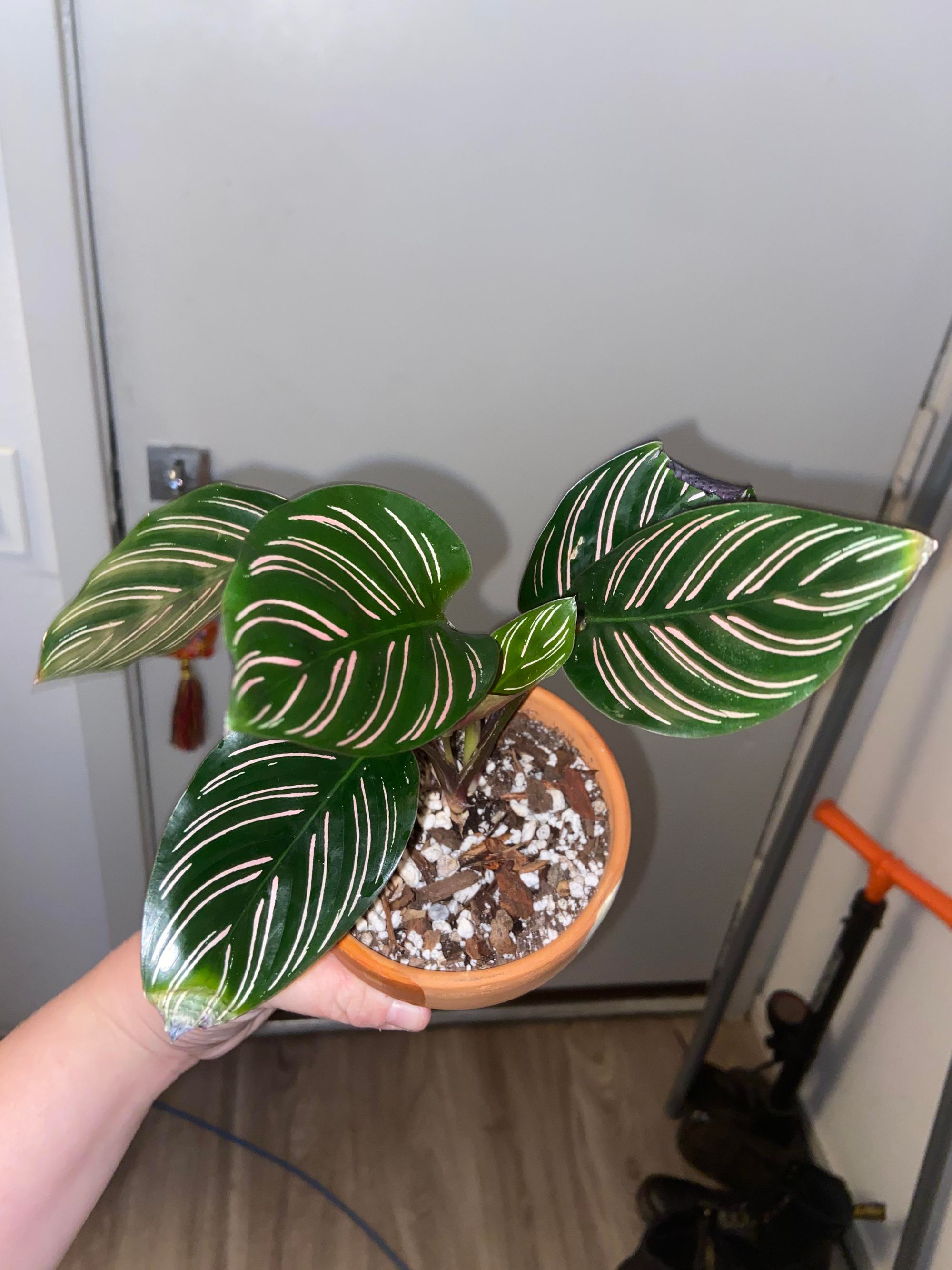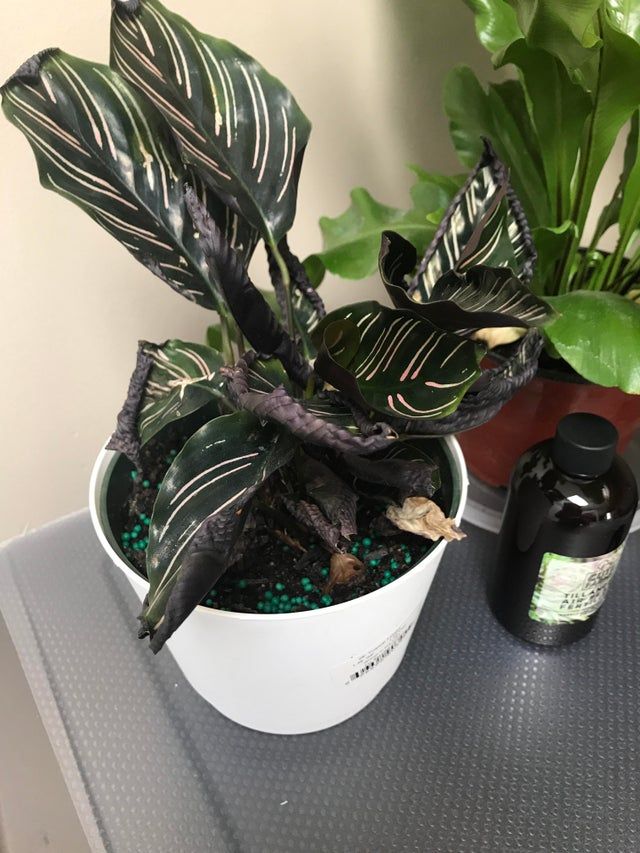8 Lessons I learnt after buying a Calathea Ornata plant

I used to have a couple of house plants, and I never really gave them much thought. But when the pandemic hit and we were all stuck at home, I started to notice them more. I started spending more time online, looking at pictures of different plants and reading about their care requirements. I began to see plants in a whole new light, as living creatures that deserved my attention and care. Slowly but surely, my collection began to grow.
At first I started with easy-to-care-for plants like pothos and ZZ plant, but before long I was experimenting with more challenging varieties like the Calathea Ornata.
I went through a period where I was constantly fighting spidermite infections on my calathea plant, and I nearly gave up altogether. But I persevered, and eventually I found a system that worked for me.
Now my collection is thriving, and I can't imagine living any other way. Plants have brought so much joy into my life, and I am grateful for that.
If you're wondering why I purchased a Calathea ornata plant, it's really because of their looks and I wanted a challenge. In general, Calathea plants are highly sought after because of their beautiful, brightly coloured leaves.
The Ornata variety is often called "pinstripe plant" or "zebra plant" because of it's striped leaves. These plants are known for their air-purifying qualities, and they are also said to be natural humidifiers hence why they are mostly sought after by plant parents in small apartments.
If you're anything like me, the allure of an indoor plant is irresistible. But as I'm sure you know, buying a plant can be tricky business.
Below are 8 Lessons I learnt after purchasing the Pinstripe plant (Calathea Ornata), hopefully this should guide you when making a decision about buying any Calathea variety.
The Soil mix is very important to Ornata plants
Most people think of soil as simply dirt, but there's a lot more to it than that. In fact, soil is a complex mixture of organic matter, minerals, air, and water. The proportions of these ingredients vary depending on the type of soil, but all soils have some basic characteristics in common. For instance, all soils are capable of supporting plant life. This is because soil provides nutrients and anchorage for roots, filters water, and regulates temperature.
Different plants thrive in different types of soil, so it's important to choose the right type of soil for your garden. Calathea ornata, for example, prefers a soil that is 60/40 mix of basic potting medium and orchid bark. The bark helps hold moisture while letting the roots breathe.
I learnt this the hard way when my first Calathea died within a few weeks. I had assumed that any potting mix would do, but I was wrong. Since then, I have been much more mindful of the type of soil I use for my plants.

If you live in a cold city, you might need grow lights for your Calathea plant
My calathea ornata plant is doing really well! I have it placed in a North-East facing window, about a foot away from the sill. But because I live in a cold/snowy part of town, I also have some grow lights that I turn on for 12 hours each day.
However, even though the ornata plant is receiving supplemental light from the grow lights, please make sure that it's actually not that close to the lights themselves.
The calathea prefers lower light, and when it was closer to the grow lights, the leaves stayed mostly folded up. But now that it's further away from the light source, it's doing much better. The leaves are open and vibrant, and it's overall just a happy plant!
There are a few places where plant parents can find grow lights for their plants. One option is to purchase grow lights from a garden centre or online store (Amazon anyone?) Another option is to use LED bulbs in a lamp, or even in a desk lamp.
Please water your Calathea ornata plant with distilled water not tap water.
As you know, I have a calathea ornata plant that I've grown for a few months now. Recently, I noticed that its leaves were looking a bit crispy and that it wasn't putting out as many new leaves as it used to. At first, I thought that maybe it was just dehydrated, so I started watering it more often. However, this only made the problem worse - the edges of the leaves started to get dark, and the new leaves it was putting out were scraggly and unhealthy-looking. I started to panic, thinking I was going to kill my second ornata plant if I didn't figure out what was wrong soon.
Thankfully, after doing some research, I found out that calathea plants prefer distilled water to tap water. Once I made the switch, my plant started to look better almost immediately. The new leaves it was putting out were healthy and full, and the crispy edges on its existing leaves slowly disappeared. If you have a calathea ornata plant, or any calathea plant for that matter, be sure to give it distilled water - your plant will thank you for it!
You can use your showerhead to simulate rainfall on your Calathea ornata
After watering this plant with distilled water, I like to put it in the shower and use the showerhead to simulate rainfall. I think it helps to get dust off the foliage.
However, it's important not to let the water sit on the foliage for too long, as this can cause problems. That's why I always run a fan on low in the room where my plants are, which provides some air movement and prevents mold or soggy soil. I think this extra step helps my calathea to thrive.
This Calathea is an insect magnet! Be very careful
Recently, my calathea started to get spider mites. I had never seen spider mites on any of my plants before, so I did some research and found out that they can be pretty difficult to get rid of.
I tried a few different things, but the only thing that seemed to work was a spray of slightly diluted 70% isopropyl alcohol with a drop of dish soap. It took a few weeks, but I finally got rid of all of the spider mites. Hopefully, my calathea will continue to thrive now that it's free of pests!

Humidity can help with rolled up Calathea leaves
If your calathea ornata's leaves are rolled up super tight, don't fret! You can try misting the plant and covering the entire thing with a plastic bag to create a greenhouse effect and trap the humidity. I did that with my other rattlesnake calathea for a few days and it bounced right back. Now with proper maintenance it hasn't rolled up again. If you have the chance, try to get your calathea ornata in a room with a humidifier for extra insurance against leaves rolling up. Good luck!
Pebble tray method can eradicate crispy Calathea leaves
Don't forget that the Calathea ornata is a high-maintenance plant that requires frequent misting and prefers high humidity levels. If the leaves begin to curl or turn brown, it is an indication that the air is too dry. A pebble tray can help to increase humidity around the plant and prevent the leaves from drying out.
When I first got mine, I was having some issues with crispy leaves. I tried the pebble tray method and I noticed a drastic difference in less crispy leaves. My Calathea plant never gets crispy leaves anymore. I also have all my other plants bunched together in a room so that definitely plays a factor in increasing humidity.
If you're trying to increase humidity, a pebble tray won't hurt.
To create a pebble tray, simply follow these steps:
- Fill a shallow dish with gravel and add water until it reaches just below the surface of the stones.
- Place the dish underneath the calathea plant and replenish the water as needed.
- The evaporation of water from the gravel will help to create a humid microclimate around the plant.
It's that simple.

Conclusion
Raising plants is no different to raising children, if anything one could argue that children become easier to raise at a certain point. Plants on the other hand, especially fussy ones like the Calathea are constantly throwing curve balls at you, waiting for the moment you make a mistake to punish you severely.
However you shouldn't let this discourage you, even when you make a mistake with a house plant. Simply make corrections and try again, I have killed 3 different calathea plants in the past 2years, but I have revived twice as many and I am getting better everyday.